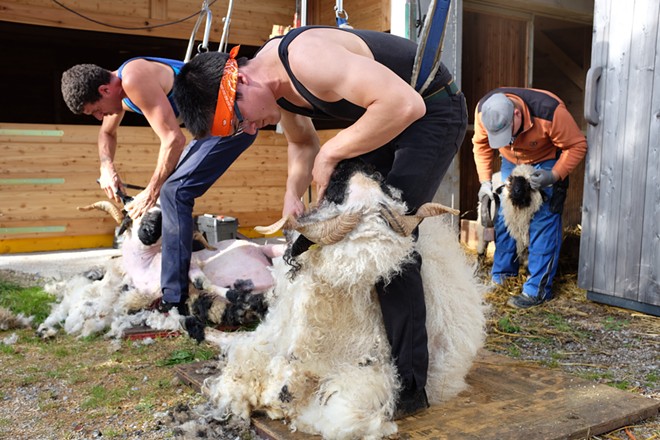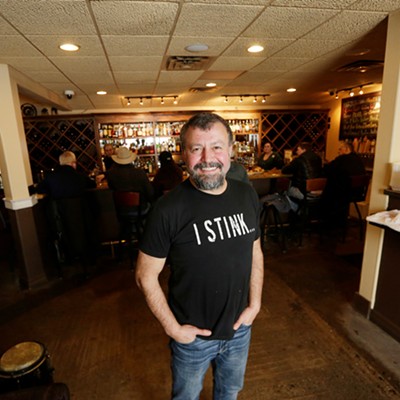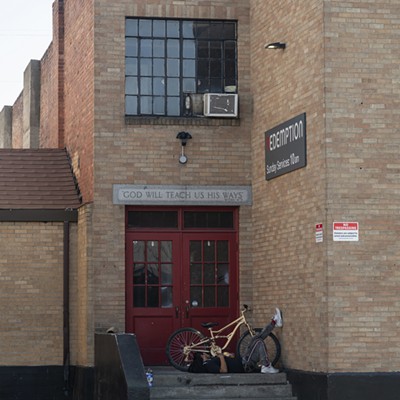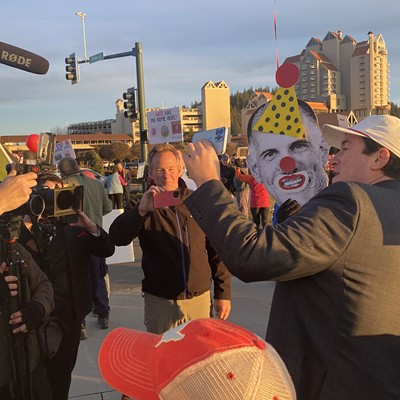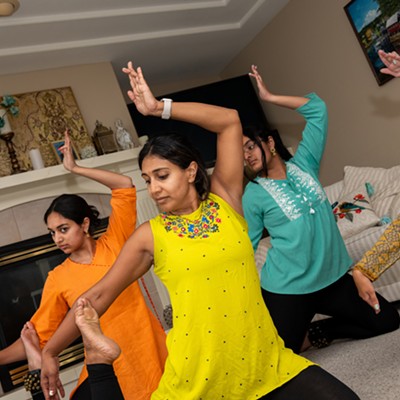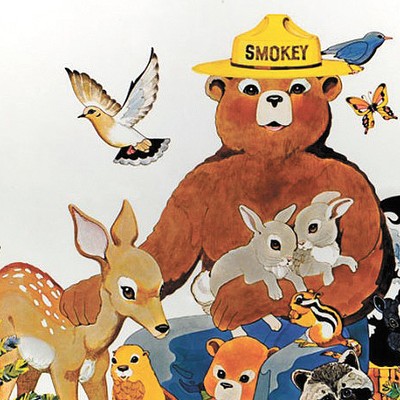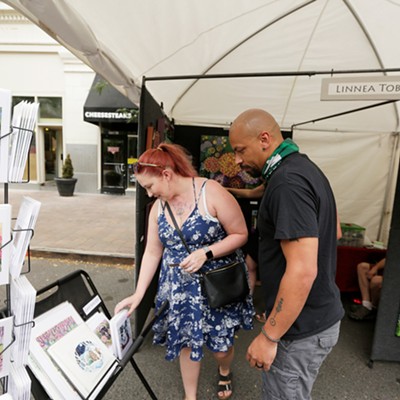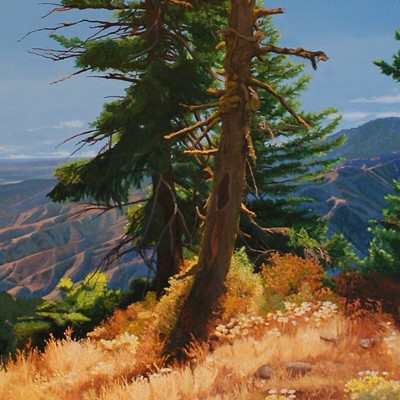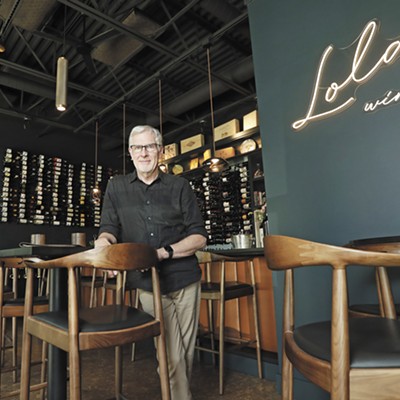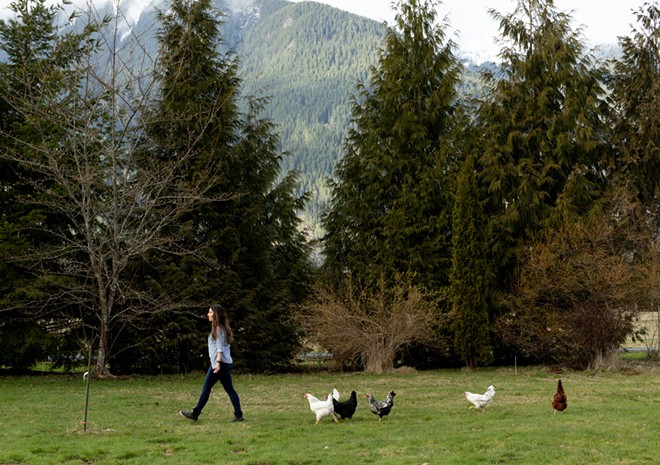
Living off the land like a modern-day episode of Little House on the Prairie sounds intriguing. Growing and preserving your food, fixing what you have, or building what you need, and working toward self-sufficiency. But in reality? It's a lot of work. And it requires a vast set of skills, especially when animals are involved.
Sheep, for example, are versatile for clearing brush and providing meat or milk for cheese. And although adorable when young and fluffy, as they grow, so too does their wool, which if left untrimmed, can imperil the animals' health, especially in warmer weather.
"For a wool breed, it would be abuse not to shear the animal," says Trevor Hollenback, who lives in Sandpoint, where he works for a local aircraft company and has a unique side gig of shearing sheep.
Hollenback says he gets a lot of calls from people who have jumped into owning sheep, not realizing they required shearing — once yearly, and sometimes twice, depending on the breed and climate. Sheep can't shed their wool like animals with fur, and thus can't cool themselves. Plus, sheep laden with excess wool are less able to evade predators, Hollenback adds.
But learning how to shear requires doing it, says Hollenback, who trained in New Zealand and Austria in 2014, then returned to the U.S. to start his company, Hollenback Shearing.
Imagine holding a several hundred pound squirming animal between your knees with one hand and razor sharp clippers in the other as you deftly and quickly — two to three minutes, tops — remove fleece, ideally in one piece, without injuring or overstressing the sheep.
"It's like dancing with someone who doesn't really want to dance with you at all, but you're required to get through every step of the dance with them, even though they're trying their hardest the entire time to leave," Hollenback says.
Want to see what that dance looks like? Hollenback will be shearing Norman, a handsome 263-pound neutered male sheep from North Idaho's Wingsong Farm during the first-ever Modern Homesteading conference this weekend, June 30 and July 1, at the Kootenai County Fairgrounds.
Hollenback is one of nearly 30 speakers at the conference, which addresses a wide range of topics: milking dairy goats, butchering, beekeeping, permaculture, gardening, sourdough, homeschooling and Amish-style shed building (attendees can enter to win the latter).
The two-day ticketed event features local, regional and national experts, including Joel Salatin, a celebrated author and leader of the regenerative agriculture movement, whose Polyface Farm was featured in Michael Pollan's book The Omnivore's Dilemma. He's joined by his son, Daniel Salatin, who addresses grazing methods and collaborating with other farms, both to increase output and, by extension, revenue. Athol Orchards Antique Apple Farm & Bakery's Nikki Conley is demonstrating how to graft apples, as well as create a profitable homestead business.
The economic potential of homesteading, says Modern Homesteading conference co-founder Melissa K. Norris, is one of the subtle differences between traditional and contemporary homesteading.
Norris defines homesteading as "the state of mind where you look to provide for yourself with less outside inputs [and] improve your family and land in as close to a holistic manner as possible."
Modern homesteading, she adds, includes "becoming more of a producer than simply a consumer."
Norris, who's from Western Washington, developed the conference with fellow homesteader Katie Millhorn of North Idaho over the past two years. The pair were familiar with each other from the online homesteading community, so when they met in person at an East Coast-based homesteading conference, they bonded over their Pacific Northwest roots and similar personal histories.
"You know, it's funny, because growing up I naively just thought that everybody raised a portion of their own food," says Norris, a fifth-generation Skagit Valley homesteader. "I thought everybody had a garden. I thought everybody's mom canned and cooked from scratch."
Like Norris, Millhorn grew up immersed in a rural lifestyle. The Freeman High School graduate remembers riding the bus with her future husband as a 6-year-old and now lives in Worley in the house where he grew up. Their family of six is the fourth generation to farm there.
Millhorn and Norris knew from local forums and personal experience there was a need for homesteading information specific to the Pacific Northwest. Where to get food for certain animals. How to process meat. Which varieties of plants grow best in colder, drier climates.
"So that was really important to us that we really find people who are growing well, both livestock and produce in this type of climate, and can speak with the expertise on what they've learned works for them versus kind of what you just see as a blanket statement to growing across the whole U.S.," Norris says.
The conference is geared toward all levels of DIY types, from novices to longtime practitioners, with an emphasis on building community.
"You're going to wear yourself out both financially and emotionally if you try to do it all plus buy all the equipment," Millhorn says.
She lists examples of ways to trade resources, from equipment and expertise to the animals themselves. If you don't have a ram but your neighbor does, breed them and split the offspring, she says.
The conference also recognizes the value of hands-on, in-person demonstrations.
"I thought I would be really good at shearing sheep because I'm very strong physically," says Millhorn, who can field dress an elk, no problem. "And then you walk away with like six stitches in your hand and you're like, I failed at that. I need a real expert, in person, to show me how to hold this critter and do it."
Beyond the physical toll of homesteading, says Norris, there's an emotional component, both positive and negative. Even though she's been around beef cattle and cows her entire life, she wasn't prepared for the loss of her dairy cow earlier this year.
"But on the other side, it reinforced that even though this is very hard, that it is still very much worth it," Norris says. "And the level of tiredness that I have at the end of a hard day homesteading. I am physically tired, but I am also so mentally proud of what we're doing." ♦
Modern Homesteading Conference • Fri, June 30 from 8:30 am-6:30 pm and Sat, July 1 from 8:30 am-7 pm • $49-$399 • All ages • Kootenai County Fairgrounds • 4056 N. Government Way, Coeur d'Alene • modernhomesteading.com

